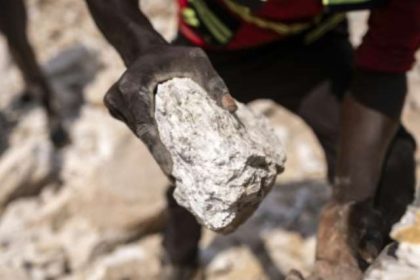Despite significant gains in Ghana’s oil industry over the past four years—despite some volatility in production—gold mining remains the backbone of the nation’s fiscal stability and economic growth.
In 2023, global output growth stood at 3.2 percent, slightly down from 3.5 percent in 2021. This was achieved despite the winding-down of quantitative easing and persistent supply chain pressures caused by the Russia-Ukraine and Israel-Hamas conflicts. During this period, Ghana’s GDP growth slipped from 3.8 percent in 2022 to 2.9 percent in 2023—its lowest since the onset of the COVID-19 pandemic—while its nominal GDP moved from GH₵181.257 billion to GH₵186.595 billion. Nonetheless, the country reclaimed its position as Africa’s top gold producer, with output soaring 32 percent to 3.7 million ounces, up from 2.8 million ounces in 2021.
This expansion was powered by increased yields from new and existing large-scale mines, which alone produced a record 3.1 million ounces in 2022—13 percent more than the previous year. Small-scale mining operations provided the remainder. Overall, gold production—the nation’s most dominant mineral—rose from 3.7 million ounces in 2022 to 4 million ounces in 2023, reflecting an 8.3 percent increase and the highest level since COVID-19 began.
Ghana’s broader economic slowdown was driven by contractions in both the industrial and services sectors, with agriculture as the primary growth driver. Within the industrial sector, which shrank by 1.2 percent, oil and gas were initially in recession before recovering toward year’s end. Electricity and construction also suffered declines, while manufacturing inched forward by 0.9 percent. Mining and quarrying contributed notably but at a lower growth rate.
In the services sector, growth eased from 6.3 percent to 5.5 percent. In contrast, agriculture advanced from 4.3 percent to 4.5 percent, marking its strongest performance in 2023. Despite these challenges, the mining sector generated GH₵11.55 billion (US$980 million) in tax revenue—a record 81.1 percent jump from GH₵6.38 billion in 2022, according to the Ghana Chamber of Mines. This achievement solidified mining’s position as Ghana’s top domestic tax contributor, accounting for 22.7 percent of direct taxes in 2023 and underscoring its importance to the government’s economic recovery plans.
Data from the Ghana Statistical Services (GSS) further underscores gold’s pivotal role: gold exports accounted for 62.1 percent of total exports in 2023. In the third quarter alone, gold contributed GH₵46.5 billion of the overall GH₵74.8 billion in export earnings, while in the second quarter it comprised 57.6 percent of export receipts.
Overall, the mining sector contributed 47.4 percent to Ghana’s nominal GDP and 17.1 percent to real GDP in the third quarter. By comparison, it accounted for 52.1 percent and 14.1 percent, respectively, in the second quarter. Gold mining specifically added GH₵8.6 billion (US$580 million) to Ghana’s GDP at constant prices in 2023, according to Statista—an increase from the previous year. The sector’s highest recorded contribution was GH₵9.8 billion in 2019, further highlighting gold’s enduring significance to Ghana’s economic landscape.






